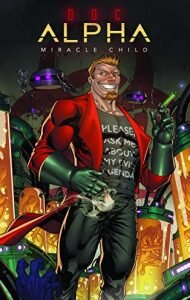Story and art: Bao Lin Hum, Steve Blevins, Colin Chan
Sirius, 1997

MELTING INTO BLACK AND WHITE feels exquisite when your eyesockets attach and draw you in like bubbling caramel.
This sensation occurred to me when I opened DEMONGATE for respite to find a world of elfish youths and tart girls in pleasant landscapes, seascapes, and skyscapes, swirling in circumstances always certain to work out fine without a lot of bashing or bombing. I quickly curled around the lilting dialogue and shapely art like a warm friend. “I could get real used to living here,” the tiny girl Gennin says in Issue 4, perched on a beach with a starfish at her feet and doves on a ledge eyeing her sweet state.
Salacious bits common in elf stories are always tastefully modest here, though the story and art in these ten issues, running through 1997, is performed under pseudonyms by Bao Lin Hum and Colin Chan, too infamous for their own names, or more like, this is who they really want to be.
The pair collaborate elsewhere with other names, and more or less “L” in their public display.
In the first three issues Bao Lin Hum pairs with Steve Blevins, another elf-wielding artist, only barely distinguishable from later issues with Colin Chan, who may be a bit more comical. Yet both artists have a wide palette of textures and effects that blend together and stand off each other in coruscating sheaves of black that rise off the page.
The dialogue snaps in equal stride scene by scene, even in the presence of the pirate queen, evil minions, and the life-sucking succubus who devours children to stay young and beautiful, presumably because she already devoured all the adults. This is life on the other side of the gate at the bottom of the sea.
Story and art grow darker in the last two issues, allowing uglier monsters and curtains of black that turn into shrouded fir forests in a driving rain like early woodblock prints full of the night. The scenery aroused a memory of monk Erasmus in the 1520s coving his thanks to Albrecht Dürer, master of ink:
What does he not express in monochrome … proportions, harmonies? Nay, he even depicts that which cannot be depicted—fire, rays of light, thunder … lightning … all the sensations and emotions, in fine, the whole mind of humanity as it reflects itself in the behavior of the body, and almost the voice itself.
These three bums did the same in my view just before the turn of the millennium. Salute as they disappear, leaving behind their eternal names.

NB. Gratitude to historians Will and Ariel Durant for their eloquence and discernment bringing Erasmus in The Reformation and so many others near to us.

